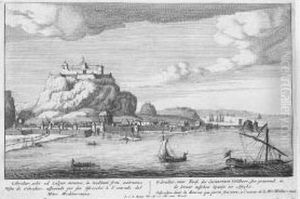Pieter Van Den Berge Paintings
Pieter van den Berge was a Dutch Golden Age engraver and artist, born in 1645 in the Netherlands. His life and work are emblematic of the era's rich tradition in printmaking and engraving, a period that was marked by significant developments in the arts and sciences in Europe. Van den Berge's contributions to the art world were primarily through his detailed engravings, which captured both the complexity of human figures and the intricate beauty of landscapes and scenes from everyday life.
His early life was shaped by the cultural and artistic environment of the Dutch Republic, which was a leading center for the arts in the 17th century. The exact details of his training and early influences are not thoroughly documented, but like many artists of his time, he likely apprenticed with a master engraver, learning the meticulous skills required for his craft. Van den Berge's work quickly gained recognition for its precision and beauty, securing his place among the era's esteemed engravers.
Throughout his career, Pieter van den Berge was known for his versatility, producing works that ranged from portraits to genre scenes, as well as illustrations for books. His engravings often featured allegorical and biblical themes, reflecting the period's interest in classical antiquity and Christian iconography. Additionally, van den Berge was part of the vibrant artistic community in Amsterdam, where he worked and interacted with other prominent artists and engravers of the time.
Despite his contributions to Dutch engraving, detailed records of van den Berge's life remain sparse, and much of what is known comes from the examination of his surviving works. His engravings continue to be appreciated for their technical skill and artistic beauty, offering insight into the cultural and social milieu of the Dutch Golden Age. Pieter van den Berge passed away in 1690, leaving behind a legacy that continues to be celebrated in the study of 17th-century European art.
